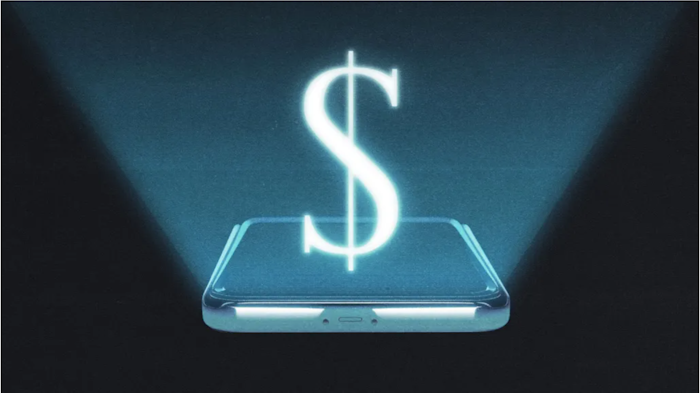What does the latest Twitter news mean for users and marketers?
Quick Threads Update
It has been three weeks since Threads landed in the app stores, and early reports show that users are welcoming the Twitter alternative with open arms.
A recent Morning Consult study surveyed users of Twitter and Threads (“bi-platform users”) and found that 23% of respondents claim to use Threads more, and 38% use both equally. Furthermore, those surveyed shared positive sentiments around the content and discourse on Threads in contrast to Twitter.
Black Twitter Finds a New Home on the Spill App
Before Threads dropped, other apps were already making gains in the market. One Twitter competitor in particular, Spill, was #1 in the iOS App Store the week before Threads came on the scene. Spill, a Black-owned social media app, was created by two former Twitter employees looking to facilitate a safe space online for diverse communities - the “culture drivers,” as co-founder Alphonzo “Phonz” Terrell calls them.
In order to explain the early success of Spill, it’s important to understand the history of Black Twitter and how it shaped the platform. Anna Otieno, Head of Research & Strategy at New Engen, explains, “Black Twitter became one of the few spaces where people could participate live in a shared experience, no matter where they were in the world. Whether looking for connection after social unrest or discourse during a Beyonce album drop, Black Twitter created a space for these interactions to safely exist on the platform.” But when Elon Musk took over Twitter and hate speech on the app skyrocketed, “These safe space communities are no longer safe, and a platform like Spill is appealing not just because it’s an alternative to Twitter, but because it’s an extension of Black Twitter. The modern Twitter that existed before Elon took over was shaped by Black Twitter, and now, those users are turning to Spill and other apps where they are appreciated and celebrated.”
Time will tell what type of staying power Spill will have, but in the meantime, the mass exodus from Twitter (and widespread embrace of new platforms) validates the emergence of safety-oriented, community-based online discourse spaces.
TikTok Introduces Text Posts
On Monday, TikTok announced a new content format on its platform. You guessed it: text posts. The company said in a press release, “With text posts, we're expanding the boundaries of content creation for everyone on TikTok, giving the written creativity we've seen in comments, captions, and videos a dedicated space to shine.”
It’s unclear whether this feature will appeal to the masses on TikTok, but according to Anna, “TikTok text posts could be a foray into a niche space within a mainstream platform.” She gives the example of an Instagram user who primarily posts text-only Instagram Stories. “This type of user, who may not be comfortable sharing photos or videos of themselves, now has more space to authentically engage on TikTok.”
Given that the heart and soul of TikTok is short-form video, we are curious to see how text posts are received by users, and whether or not they can gain traction on the app.
Bye Bye Birdie: Twitter Rebrands to X
Elon Musk’s latest attempt at salvaging Twitter, or rather, what’s left of Twitter, is a rebrand. Where once existed an iconic blue bird, now lives an “X.” This, apparently, is phase one of a total brand overhaul that Musk claims will transform the platform into an “everything app.”
In a Tweet, Twitter CEO Linda Yaccarino elaborated by saying, “X is the future state of unlimited interactivity – centered in audio, video, messaging, payments/banking – creating a global marketplace for ideas, goods, services, and opportunities. Powered by AI, X will connect us all in ways we’re just beginning to imagine.”
This type of language may sound enticing at face value, but it’s necessary to consider whether this version of Twitter is what consumers actually want, and if brands and advertisers would find value in it. To put this in perspective, Anna explains, “People use Twitter in part because it offers a level of anonymity that isn’t found on an app like Facebook, for example. On Facebook, a user’s profile is a reflection of their true identity and their network includes friends, family, colleagues, classmates, etc.” This is significant because if Twitter really does become an everything app, where users are more easily identifiable and their financial information is linked to their profile, it would likely put off users who want more control over their security and privacy.
Of course, Twitter’s pursuit of an “everything brand” isn’t happening in a vacuum. Anna explains that “Platforms are evolving into things that they weren’t before. Instagram is turning into TikTok, TikTok is turning into Twitter and Twitter is turning into X (whatever that may be). Sure, they are trying to come up with differentiated content touchpoints, but they are also trying to harness each other’s capabilities in order to stay competitive and engaging.”
The Fate of X
If you think that X feels nebulous in both brand and concept, then you’re not alone. While the letter X may make sense for Musk personally, as a symbol he has employed across his other ventures, it doesn’t seem to make sense financially or logistically. X is a ubiquitous character across the tech sector and, in fact, Meta already has a trademark for an “X” logo. As such, the new brand is primed to be met with legal challenges, and many, including Anna, expect Twitter to be sued.
“X may be something that Elon thought about in terms of his personal brand, but it doesn’t make sense on a global scale because there are so many others that have used or trademarked the letter X. Musk owned the domain X.com over 20 years ago, but had to buy it back in 2017 from then-owner PayPal.”
If Twitter is able to turn itself around, it won’t be because of a new name and logo. It will be because it was able to regain the confidence of users and brands. When Elon Musk took over and allowed hate speech to run rampant on the platform, when he disbanded privacy and security councils within the company and laid off 80% of his workforce, he cost Twitter 50% of its ad investment from U.S. advertisers alone.
Anna believes that in order to meaningfully move the needle “[X] will have to reinstate councils to make sure users and brands are safe on the site. It will need to monitor and prohibit bigoted rhetoric and misinformation while reinforcing protections for users.”
And if Twitter can’t pull this off? Anna predicts that:
If Twitter fails to do these things, it will be successful primarily within niche, volatile audiences. Which is somewhat where we are at today. That’s audiences that brands and advertisers will not want to engage with or market to.
Where Do We (and Twitter) Go From Here?
The general consensus among New Engen leaders is that Twitter’s brand evolution is, at best, a risky move that will need to be corrected down the line. At worst, it’s a futile attempt at distracting from the true problems at hand.
According to New Engen VP of Performance Marketing Kevin Goodwin, there are parallels between what’s going on at Twitter and what happened when Facebook rebranded to Meta. “After the Meta rebrand, there seemed to be less focus on ad tools and in-app experiences and advertisers responded by shifting their dollars elsewhere. Eventually, the monetary pressure caught up with Meta and it was forced to prioritize its advertising tools once again.” An important distinction, however, is that Elon Musk has been largely unsuccessful at navigating Twitter’s challenges so far, and Kevin says that, “on a personal level, I have less faith that Elon will be as adaptive to the market as Meta was. It could be a long time before Twitter delivers a compelling ad product if it’s able to deliver one at all.”
This skepticism is shared by Adam Telian, New Engen VP of Performance Marketing, who says, “There are systemic problems at Twitter that can’t be fixed with a new logo. Ad revenue and user engagement are falling, and toxic discourse is trending up. Even though Twitter is trying to woo back advertisers with discounted video ad prices, I don’t see this tactic generating the investment needed to meaningfully impact the ad business.”
Given how many twists and turns there have already been in the Twitter story, it’s impossible to predict what comes next. Kevin’s main takeaway is this:
Even if you aren’t hyper-reliant on Twitter for driving revenue, this is a reminder to marketers that it’s critical to take a diversified approach to media buying. The same message was true back in March when TikTok was the one making headlines. As an agency, we recommend mitigating idiosyncratic risks, like over-indexing on a single channel, by maintaining a balanced media mix and being prepared for unforeseen circumstances by having a contingency plan for your next marketing dollar.
Whatever move Elon makes next, we’ll cover it here. Stay in the know by subscribing to our newsletter and following us on LinkedIn.








